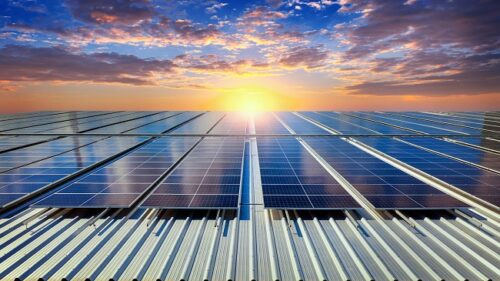Rama Krishna Sangem
India’s solar power story is rising along with Sun. Just a decade ago, India’s solar landscape was in its infancy, with panels dotting only a few rooftops and deserts. Today, the nation has raced ahead to script history: India has officially surpassed Japan to become the world’s third-largest solar power producer. According to the International Renewable Energy Agency (IRENA), India generated an impressive 1,08,494 GWh of solar energy, leaving Japan behind at 96,459 GWh[2].
India’s solar power capacity stood at 119.02 GW as of July 2025. This includes 90.99 GW from ground‑mounted solar plants, 19.88 GW from grid‑connected rooftop systems, 3.06 GW from hybrid projects, and 5.09 GW from off‑grid solar installations, reflecting the country’s diverse approach to expanding renewable energy.[3]
India’s progress in the renewable energy sector reflects the country’s focused policies and strategic planning under national leadership. As part of the pledge made at COP26, efforts are being directed towards reaching the target of 500 GW of non-fossil fuel electricity capacity by 2030. This commitment is seen as a key step in India’s clean energy transition and its broader climate goals.
2,000 MW up in a month
India’s cumulative solar capacity was over 127 GW as of September 2025, and its installed solar capacity reached 125 GW as of early October 2025. The country is the world’s third-largest solar power producer, having added a record 4.2 GW in September 2025 alone. Cumulative capacity: Over 127 GW as of September 30, 2025.
Recent growth: The capacity grew by 4.2 GW in September 2025. Global ranking: India is the third-largest solar power producer in the world. Historical context: India’s solar capacity has grown significantly, increasing from 2.82 GW in 2014 to 110.9 GW in early 2025. Components: The total capacity includes ground-mounted plants, rooftop systems, hybrid projects, and off-grid installations.
This rapid growth in domestic capacity is strongly supported by government policies. To promote Indian-made solar products, the government has made it mandatory for projects under schemes like the Rooftop Solar Programme, PM-KUSUM, and CPSU Scheme Phase II to use panels and cells made in India.
To make this shift more effective, a Basic Customs Duty (BCD) was introduced in April 2022 on imported solar cells and modules. This makes imports more expensive and encourages the use of Indian alternatives—boosting local manufacturing and reducing reliance on foreign suppliers.


